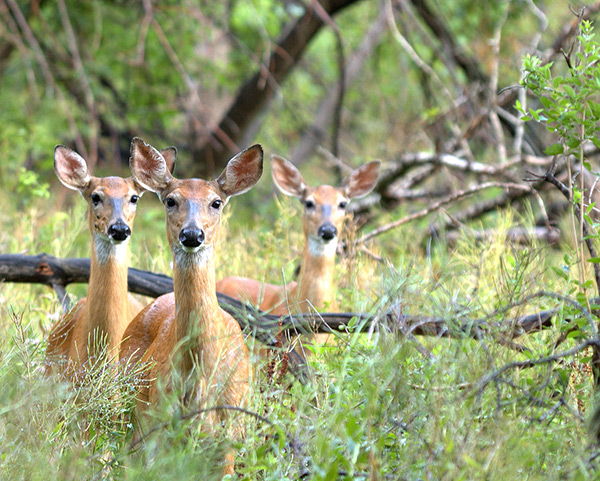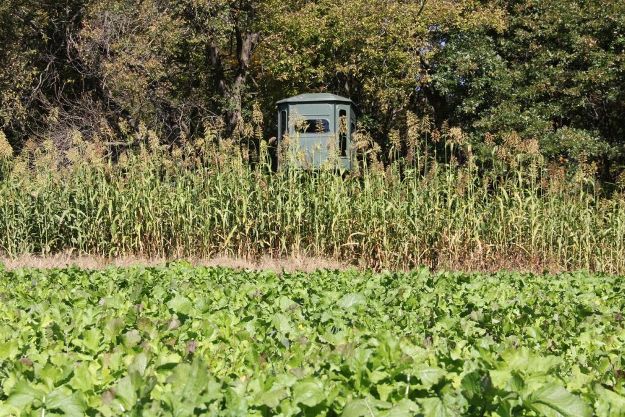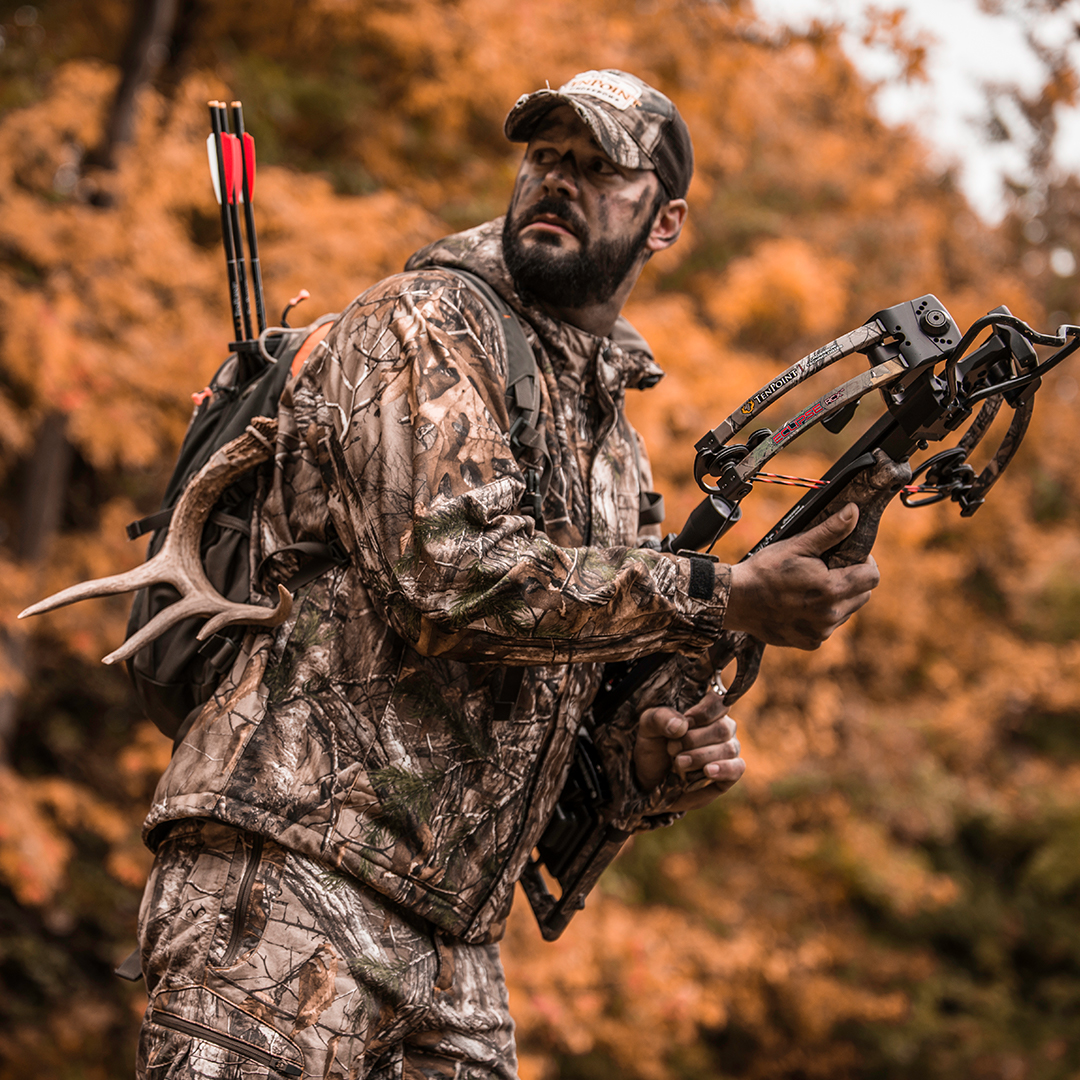Entrance and Exit Routes from Your Hunting Location
/ September 28th, 2017Something often times considered, but disregarded more often than not, is the entrance and exit routes to and from your treestands or ground blinds. Something to note is that your entrance and exit routes may not be the same on any given day, and that sometimes you might have to leave a stand in a completely different direction compared to where you walked in. In this article, we are going to dive into the thick and thin of this somewhat ambiguous topic.
First and foremost, the whole idea behind planning entrance and exit routes is to avoid spooking deer. Even if you have the best crossbow or compound bow on the market, it won’t matter if you’ve spooked the deer. To do this effectively, you have to know where the deer are likely to be at both times. For example, deer are likely to be somewhere near their bedding area while you’re walking into your evening stand, so a good rule of thumb would be avoid walking anywhere near or anywhere upwind of such a bedding location. If bedded deer can see you or smell you on the way into a stand, odds are your hunt won’t pan out the way you hoped it would.
 One important thing to note here, is that whitetail deer do have fairly good hearing, but being quiet isn’t necessarily your first priority. One thing a lot of people do, especially in hill country in the Midwest, is utilize ditches and drainages to slip right past bedded deer. How does this work?
One important thing to note here, is that whitetail deer do have fairly good hearing, but being quiet isn’t necessarily your first priority. One thing a lot of people do, especially in hill country in the Midwest, is utilize ditches and drainages to slip right past bedded deer. How does this work?
To start, the deeper the ditch, the steeper its side walls, the less likely it is for deer to spot you. Second, depending on the wind direction, deer either won’t be able to smell you or, your wind will swirl just enough because of the topographic changes the ditch provides to detour your scent away from those bedded deer. Even if you should happen to break a small twig or crunch some leaves while walking in, deer are used to hearing noises. Remember, they live with squirrels, chipmunks and other animals scurrying around the forest floor all day, every day. A little noise might cause them to raise their head in curiosity, but you likely won’t spook them unless you make noises other than what might naturally occur in mother nature (i.e. talking, whispering, or walking with big cloppy footsteps).
No ditches nearby? You can easily accomplish the same thing by keeping a ridge line between you and bedded deer. Not in hill country? You can also use native vegetation, or even plant your own crops or grasses to offer some concealment to your entrance and exit routes. One plant that works very well is sorghum grass. It grows tall enough that, if planted correctly, can offer a virtual wall between you and wherever the deer are bedded, offering you the perfect opportunity to sneak in to the stand. These types of tall-growing plants are often called “plot screen”, because of their utility in offering additional cover around small food plots to make the deer feel more safe and secure in that plot.
 Most often, plot screen is utilized to hide your entrance and exit through open areas like large crop fields and some open prairie. If this is the route you decide to go, there are some key pieces of information you’ll have to know in order for this “screen” to be effective. First, it will be imperative that you know where most of the deer are bedding. It would be a terrible shame to plant such a screen, only to misjudge the bedding area location, walk in on the wrong side, and have your entire deer herd spot you from miles away. If you know precisely where the deer are bedding, then you can strategically orient the plot screen to separate you from the deer as you walk to your stand.
Most often, plot screen is utilized to hide your entrance and exit through open areas like large crop fields and some open prairie. If this is the route you decide to go, there are some key pieces of information you’ll have to know in order for this “screen” to be effective. First, it will be imperative that you know where most of the deer are bedding. It would be a terrible shame to plant such a screen, only to misjudge the bedding area location, walk in on the wrong side, and have your entire deer herd spot you from miles away. If you know precisely where the deer are bedding, then you can strategically orient the plot screen to separate you from the deer as you walk to your stand.
The second element here, is to know which wind directions you plan to hunt in that particular stand. Deer tend to bed in different locations depending on the wind direction. If you know where the deer bed on a Northwest wind and plant your screen according to that knowledge, but then hunt that stand on a South wind, the deer may have changed their bedding location and your screen might no longer be effective.
Regardless of what terrain type you hunt, something else of importance is to understand that deer are more likely to be in open areas at night and in the timber or thick bedding cover during the day. What that means for you is that it might not be wise to walk out from a hunt, the same way that you walked in. Knowing the behavior and bedding habits of the deer herd you’re hunting can help with this, but it is by no means “fool proof”. On a morning hunt, you certainly want to avoid walking to your stand through any type of possible feeding area. That is most likely where the deer are in the waning hours of the early morning. However, deer are far less likely to feed in larger ag fields during the day and, therefore, take advantage of them when exiting your stand in the morning.
On evening hunts, the opposite is generally true. Fields are ideal for walking to the stand in the afternoon, but that is where the deer will likely congregate at dusk and remain there into the night. Exiting your stand that way would only bump deer and alert them to your human intrusion. An exit route through deeper timber might be your better option. Realize again, that these are generalities and that each deer herd and each property might set up differently. So it’s up to you to learn your hunting location and deer movement patterns in order to determine your most effective entrance and exit routes.
 For both entrance and exit routes, just as you should to increase your odds while hunting, wind direction is an important factor to locating the best route available in both cases. You don’t want your wind blowing toward deer while you’re on stand and, if you can help it, it’s best to avoid your wind blowing toward deer while walking in and out of that stand as well. This means that, in order to be as safe as possible and to spook as few deer as possible, a lot of thought should be put into where you hunt, how you hunt that location, and how you’re going to go to and from that spot.
For both entrance and exit routes, just as you should to increase your odds while hunting, wind direction is an important factor to locating the best route available in both cases. You don’t want your wind blowing toward deer while you’re on stand and, if you can help it, it’s best to avoid your wind blowing toward deer while walking in and out of that stand as well. This means that, in order to be as safe as possible and to spook as few deer as possible, a lot of thought should be put into where you hunt, how you hunt that location, and how you’re going to go to and from that spot.
At the end of the day, many hunters feel that the more stands they have the option to hunt, the better their odds. In reality though, it’s probably the opposite. If you have too many stands to choose from and you hunt and access those stands somewhat randomly, all you’re really doing is spreading your human scent in several different locations, educating all the deer in the area that you’re traipsing around the woods. All that will do is make the deer go truly nocturnal.
Instead, the smart thing to do is limit the number of stands you have to a couple strategically placed spots where you have bullet proof entrance and exit routes. Do this for a couple select wind directions that your areas get, especially the winds that a cold front pushes through, and you’ll greatly increase your odds of harvesting a mature buck, and use that hunting crossbow to put meat in the freezer!


